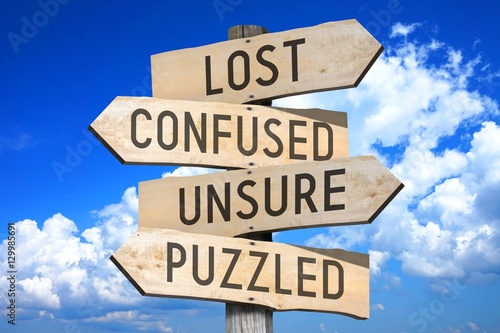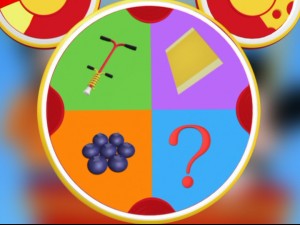Whenever I was asked the age old question “what do you want to be when you grow up?", for as long as I can remember, the answer was simple. It was just so clear. I was going to be a teacher.
So I did what every aspiring educator does. I played school with my dolls for hours on end, making worksheets for the Cabbage Patch Kids to complete, delivering lessons to my barbie dolls. I was always a good student myself, working hard in school. I ended up at the University of Delaware to pursue a degree in Early Childhood Education. And so I embarked on my life long journey to be a kindergarten teacher at the age of 6.
And I have never second guessed my choice, that is until recently. Well, I’m not even sure if that is a fair statement. I can’t imagine spending my days anywhere other than in a classroom surrounded by 20 five and six year olds. I realize to some of you, that sounds like a nightmare, but for me, it is my happy place.
I love to see the smiles on their faces when they come to school each morning, eager to share an exciting story about losing their first tooth over breakfast. I love the little hugs that I get all day long, and spending the majority of my day sitting criss cross on the rug.
What I struggle with these days is the constant push to be faster, smarter and better than we were yesterday and knowing that the responsibility falls solely on the teachers to get them there can be daunting. Benchmarks aren’t being met, they are being exceeded. Students aren’t allowed time to explore, they are being timed how quickly they can complete a math sheet with facts to 5.
I hear myself tell my students that “it is not a time for talking” instead of reliving the epic “tooth in the bowl of cereal” incident that happened just a few hours before and is so important to that little learner. I feel myself putting pressure on these young children to learn in a way that is not natural or developmentally appropriate. Let’s face it - I am asking my kids to learn in a way that is just not good teaching. And it breaks my heart. I am discouraged and deflated.
I still believe that kids are innately curious. They need to feel loved, and safe, and trusted and valued in my classroom. I believe that kids need social interactions and that learning is a process. They need to know it’s okay to fail and they need to be an active participant in constructing their own learning. The classroom needs to be OURs and not just MINE. But more importantly, the learning and teaching needs to be OURS too.
So how do I get there? How do I get back to the teacher I was so many years ago? How do I find the balance between accomplishing the what by manipulating the how?
I can’t seem to get Simon Sinek’s voice out of my head: “People don’t buy what you do, they buy why you do it”. I need to get back to my “why”, especially if I want my students to reach those lofty goals that have been set by the district.
I feel that my students have lost their identities, and so have I.
This week, with the help of Dr. Bogad, I was given the time, support and inspiration that I have been searching for. I need to take my classroom back but I feel like I need to take small steps to reclaim my ideals as an early childhood teacher.
I feel that I may need to disguise my efforts to restore my students identities, to revive their curiosity. I find myself agreeing with Sir Ken Robinson. I find myself returning to the idea that all human beings are naturally diverse, innately curious and inherently creative. And I find that I am missing this in my classroom. I want to foster their love of learning and I don’t want have to close my door to do it.
In an effort to find a balance between the 2, I am going to take the advice of Britney Richer, and start with just 1 thing. I am going to incorporate an activity I am calling ‘Digital Discoveries’ into my school day.
Students will be asked to document daily activities through the use of photography. Families will be enlisted to allow their child to borrow their smartphone in an effort to capture an image of daily life, such as “dinnertime” or “my favorite pair of shoes”. Then the family will email me the photo and we will take it from there, printing the photos for use in the classroom.
Once we have the photos in hand, the children will be allowed to manipulate and design a frame in which to showcase their work. Working with Kelly Reed, creating, making and manipulating actual materials really helped to solidify how important it is for kids to take an active role in their learning. Children need to participate in constructing their own knowledge and this is one avenue to get us one step closer.
“Digital Discoveries” will help me make the jump from Technocrat to techno-traditionalist, using technology in a way to guide and inspire my teaching. Incorporating this activity into my classroom will help me to accomplish traditional classroom tasks through the exciting and motivating use of technology. It will offer a jumping off point to begin important conversations and truly get to know my students again.
As Postman and Weingartner argue, the environment of learning is more important than the content, and therefore teachers should begin to pay more attention to the learning environment they help to create. I often find myself asking a similar question to Wesch, ‘Have we made the mold too narrow or inflexible, or more likely, just not meaningful to inspire our students?”
I can only hope that continuing to build on the “Digital Discoveries” of my student’s lives throughout the school year will be meaningful and inspire more learning opportunities that I can even imagine. I am not sure I can wait until September to get started. Does anyone have a phone I can borrow? I need to take a picture of my shoes, they are my favorite pair after all.
*I emailed the self assessment rubric to Dr. Bogad











